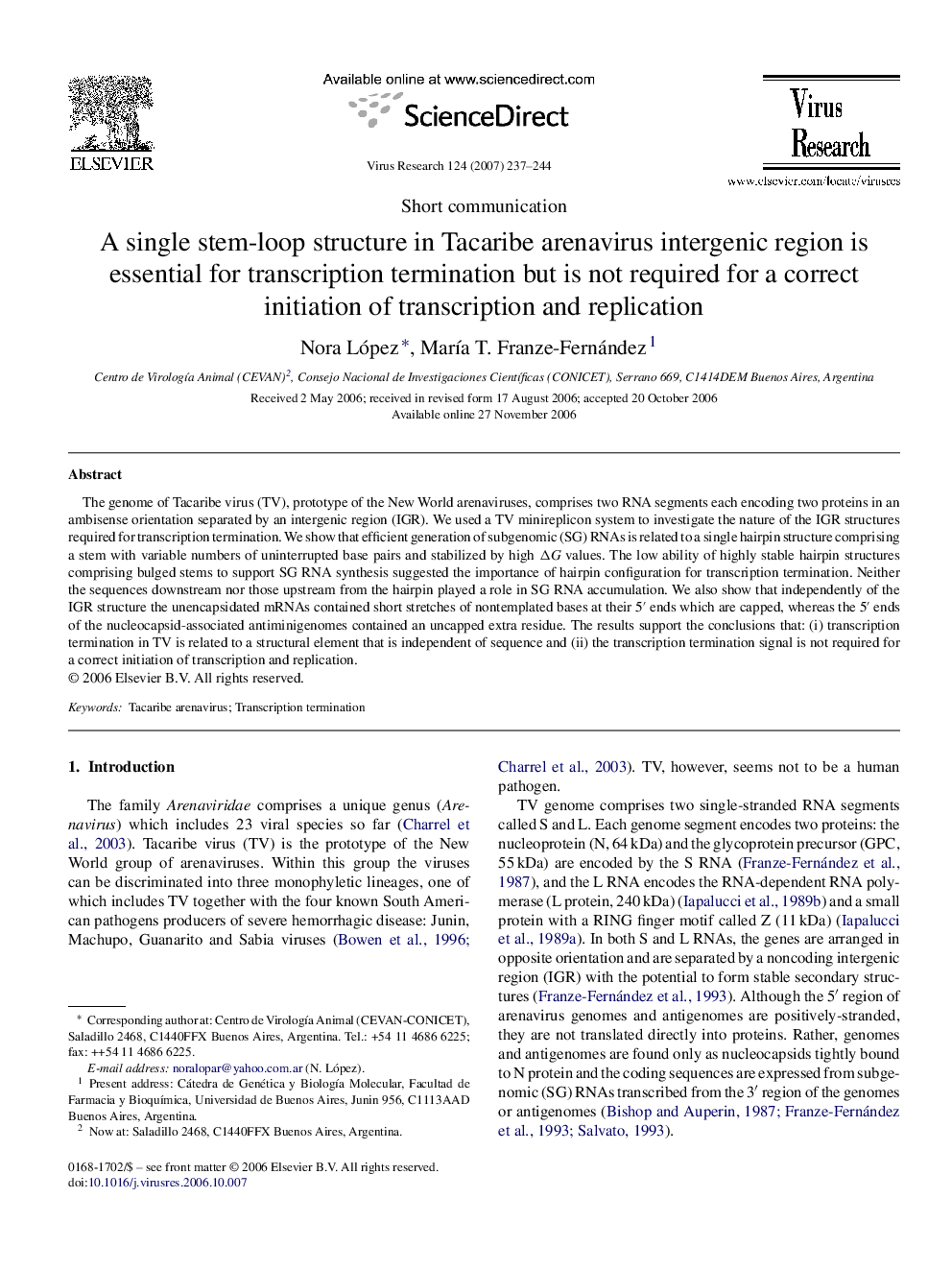| Article ID | Journal | Published Year | Pages | File Type |
|---|---|---|---|---|
| 3430995 | Virus Research | 2007 | 8 Pages |
The genome of Tacaribe virus (TV), prototype of the New World arenaviruses, comprises two RNA segments each encoding two proteins in an ambisense orientation separated by an intergenic region (IGR). We used a TV minireplicon system to investigate the nature of the IGR structures required for transcription termination. We show that efficient generation of subgenomic (SG) RNAs is related to a single hairpin structure comprising a stem with variable numbers of uninterrupted base pairs and stabilized by high ΔG values. The low ability of highly stable hairpin structures comprising bulged stems to support SG RNA synthesis suggested the importance of hairpin configuration for transcription termination. Neither the sequences downstream nor those upstream from the hairpin played a role in SG RNA accumulation. We also show that independently of the IGR structure the unencapsidated mRNAs contained short stretches of nontemplated bases at their 5′ ends which are capped, whereas the 5′ ends of the nucleocapsid-associated antiminigenomes contained an uncapped extra residue. The results support the conclusions that: (i) transcription termination in TV is related to a structural element that is independent of sequence and (ii) the transcription termination signal is not required for a correct initiation of transcription and replication.
